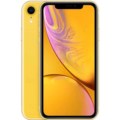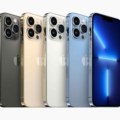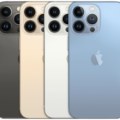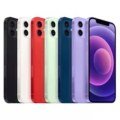- Apple Devices
- Apple iPhones
- Apple iPhone 7 Plus full specification
Apple iPhone 7 Plus full specification
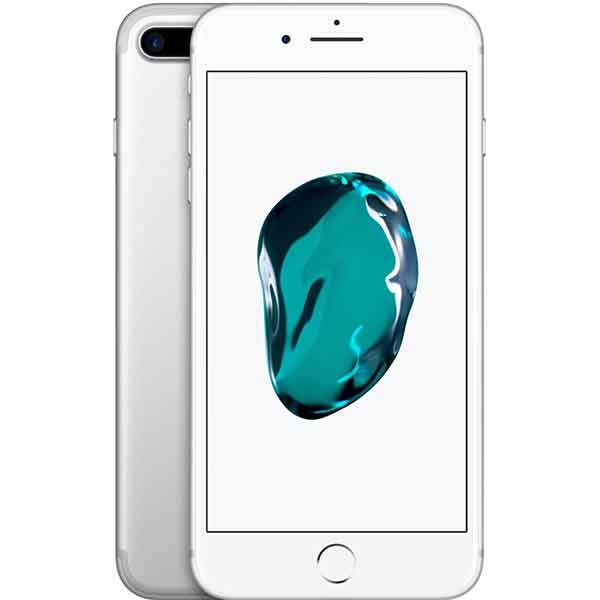





SPECIFICATIONS
General
| Status | Available |
| Announced |
Released 2016, September |
| Released | 08 July, 2025 |
| Model | iPhone 7 Plus - A1784 (Global), A1661 (USA & China), A1785 (Japan), A1786 (China) |
| Price Apple iPhone Price in USA, UK, Canada, Australia, India, Pakistan, China, Japan and Europe | $569 - $669 || £280 - £350 || Rs.77,900 - Rs.96,249 || ₹46,065 - ₹59,799 |
Network
| Technology | GSM / CDMA / HSPA / EVDO / LTE |
| 2G Network |
GSM 850 / 900 / 1800 / 1900 - A1661, A1784 CDMA 800 / 1900 / 2100 - A1661 |
| 3G Network |
HSDPA 850 / 900 / 1700(AWS) / 1900 / 2100 - A1661, A1784 CDMA2000 1xEV-DO & TD-SCDMA - A1661 |
| 4G Network | LTE band 1(2100), 2(1900), 3(1800), 4(1700/2100), 5(850), 7(2600), 8(900), 12(700), 13(700), 17(700), 18(800), 19(800), 20(800), 25(1900), 26(850), 27(800), 28(700), 29(700), 30(2300), 38(2600), 39(1900), 40(2300), 41(2500) - A1661, A1784 |
| Speed | HSPA 42.2/5.76 Mbps, LTE-A (3CA) Cat9 450/50 Mbps, EV-DO Rev.A 3.1 Mbps |
| GPRS GPRS (General Packet Radio Service) is a packet oriented mobile data service on the 2G and 3G cellular communication system's global system for mobile communications (GSM), Generally, GPRS is used for the purpose of wireless data transfer, such as sharing pictures and videos or browsing the Internet via a mobile phone connection. | |
| EDGE EDGE (Enhanced Data GSM Environment) is a wireless network technology generally considered the next step in the 2G network offers data transfer rates up to four times faster than ordinary GSM networks, Generally, EDGE is used for the purpose of wireless data transfer, such as sharing pictures and videos or browsing the Internet via a mobile phone connection. |
Body
| Dimensions | 158.2 x 77.9 x 7.3 mm (6.23 x 3.07 x 0.29 in) |
| Weight | 188 g (6.63 oz) |
| Colors |
Jet Black, Black, Silver, Gold, Rose Gold |
| SIM SIM (Subscriber Identity Module) is a small card that contains mobile network subscriber's account information. This allows the phone using the card to attach to a mobile network. The SIM card is most commonly associated with GSM and UMTS mobile networks. Moving a SIM card from one phone to another allows a subscriber to switch mobile phones without having to contact their mobile network carrier. SIM cards can also be used by a phone to store limited amounts of data, such as phone numbers and text messages. | Nano-SIM |
Display
| Display Type Display Technology => A number of display technologies and types used in mobile phones => TFT (Thin Film Transistor), IPS (In-Place Switching), OLED (Organic Light Emitting Diode), AMOLED (Active-Matrix Organic Light-Emitting Diode), Super AMOLED (an even advanced version of AMOLED), Resistive Touchscreen (Resistive touchscreens contain two layer of conductive material with a very small gap between them which acts as a resistance), Capacitive Touchsceen (Capacitive touchscreen technology consists of a layer of glass coated with a transparent conductor) | LED-backlit IPS LCD, capacitive touchscreen, 16M colors |
| Size | 5.5 inches (~67.7% screen-to-body ratio) |
| Display Colors Display Colors is refers to the number of different shades of colors that the screen is capable of displaying => 64K colors, 256K colors and 16 million colors, Obviously 16M is highest available range of colors and better than others. | 16M colors |
| Resolution | 1080 x 1920 pixels |
| Pixel Density Pixel Density (PPI) is refers to the concentration of pixels on a particular display, measured in pixels per inch (ppi). Pixel density is calculated by dividing the diagonal pixel resolution of a display by its diagonal size, higher pixel density better display quality. | 401 ppi |
| Display Protection Display Protection => Gorilla Glass is a special alkali-aluminosilicate glass shield with exceptional damage resistance that helps protect mobile displays from scratches, drops, and bumps of everyday use, It is always better to go for a smartphone with Gorilla Glass for that added protection and peace of mind. | Ion-strengthened glass, oleophobic coating |
| Multitouch | |
| Features |
- Wide color gamut display - 3D Touch display & home button - Display Zoom |
Camera
| Primary Camera is able to capture photographs and usually videos, The most important characteristics of a camera are the resolution (measured in megapixels), lens focus type (fixed or automatic), higher megapixel cameras are known to capture higher quality photos, but not always a good measurement of the photos quality. |
Lens-1: 12 MP, f/1.8, 28mm (wide), 1/3", PDAF, OIS Lens-2: 12 MP, f/2.8, 56mm (telephoto), 1/3.6", AF, 2x optical zoom |
| Video | 1080p@30fps |
| Camera Features | Face detection, HDR |
| Selfie Camera | 7 MP, f/2.2, 32mm (standard) |
| Video | 1080p@30fps |
| Camera Features | Face detection, HDR |
Hardware
| Chipset Chipset is a group of integrated circuits designed to perform one or a more dedicated functions, often with real time computing constraints, Popular smartphones are equipped with more advanced embedded chipsets that can do many different tasks depending on their programming. | Apple A10 Fusion |
| CPU CPU (Central Processing Unit) mostly known as processors, CPU processes instructions in order to carry out certain functions that make your device operate properly. Processors are often described as the brain of computers, smartphones and tablets, Smartphones and tablets rely on processors to carry out their every task, Processors are an incredibly important factor in selecting any type of computing device, including your smartphone. | Quad-core 2.34 GHz (2x Hurricane + 2x Zephyr) |
| GPU GPU (Graphics Processing Unit) is a single-chip processor designed to rapidly manipulate and alter memory to accelerate the creation of images in a frame buffer intended for output to a display, This includes things such as lighting effects, object transformations, and 3D motion. | PowerVR Series7XT Plus (six-core graphics) |
| RAM (Memory) RAM (Random Access Memory) is a type of computer memory that can be accessed randomly, any byte of memory can be accessed without touching the preceding bytes that allows information to be stored and accessed quickly from random locations. RAM is the most common type of memory found in computer systems, smartphones, tablets and other electronic devices. | 3 GB |
| Internal Storage Internal Storage is a data storage space (flash memory) mostly used in smartphones, tablets and other electronic devices where operating system, apps, music, photos, videos, files and other user data Is stored. | 32/128/256 GB |
| Card Slot Memory Card Slot is a special slot for inserting a memory card. Memory cards allow you to expand the phone's built-in memory, A memory card (sometimes called a flash memory card or a storage card) is a small storage medium used to store data such as text, pictures, audio, and video, for use on small, portable or remote computing devices such as mobile phones, mp3 players, digital cameras. | NO |
| Sensors Sensors are electronic components that detects and responds to some type of input from the physical environment. The specific input could be light, heat, motion, moisture, pressure and location, The output is generally a signal that is converted to use in computing systems, a location sensor, such as a GPS receiver is able to detect current location of your electronic device. | Fingerprint (front-mounted), accelerometer, gyro, proximity, compass, barometer |
Software
| Operating System OS => Every computer system run on a base software called Operating System (OS). Operating System controls all basic operations of the computer (such as smartphone, PDAs, tablet computers and other handheld devices). The Operating System allows the user to install and run third party applications (apps), apps are used to add new functionality to the device. | iOS 10.0.1, upgradable to iOS 13 |
| Java Support Java for Mobile Devices is a set of technologies that let developers deliver applications and services to all types of mobile handsets, ranging from price efficient feature-phones to the latest smartphones. Java is currently running on over 3 billion phones worldwide, and growing. It offers unrivaled potential for the distribution and monetization of mobile applications. | NO |
| Messaging | iMessage, SMS (threaded view), MMS, Email, Push Email |
| Browser (Default) | Safari |
Media
| Loudspeaker | Yes, with stereo speakers |
| 3.5mm Jack | |
| FM Radio | NO |
| Features |
- Active noise cancellation with dedicated mic - Lightning to 3.5 mm headphone jack adapter incl. |
Connectivity
| Bluetooth Bluetooth is a wireless communications technology for exchanging data between mobile phones, headsets, computers and other network devices over short distances without wires, Bluetooth technology was primarily designed to support simple wireless networking of personal consumer devices. | v4.2, A2DP, LE |
| Infrared Infrared connectivity is an old wireless technology used to connect two electronic devices. It uses a beam of infrared light to transmit information and so requires direct line of sight and operates only at close range. | |
| Wi-fi Wi-Fi is a popular wireless networking technology using radio waves to provide high-speed network connections that allows devices to communicate without cords or cables, Wi-Fi is increasingly becoming the preferred mode of internet connectivity all over the world. | Wi-Fi 802.11 a/b/g/n/ac, dual-band, hotspot |
| Wi-fi Hotspot | |
| USB | 2.0, proprietary reversible connector |
| GPS GPS The Global Positioning System is a satellite-based radio navigation system, GPS permits users to determine their position, velocity and the time 24 hours a day, in all weather, anywhere in the world, In order to locate your position, your device or GPS receiver must have a clear view of the sky. | Yes, with A-GPS, GLONASS |
| NFC NFC (Near field communication) is a set of standards for smartphones and similar devices to establish peer-to-peer radio communications with each other by touching them together or bringing them into proximity, usually no more than a few inches. |
Battery
| Battery Type Battery Type => Cell phones run on various kinds of batteries depending on the manufacturer, phone size or shape and features. There are basically four types of cell phone batteries => Lithium Polymer, Lithium Ion, Nickel Metal Hydride and Nickel Cadmium. | Li-Ion (Lithium Ion) |
| Capacity Battery Capacity is a measure (typically in Amp-hr) of the charge stored by the battery, and is determined by the mass of active material contained in the battery. The battery capacity represents the maximum amount of energy that can be extracted from the battery under certain conditions. | 2900 mAh battery (11.1 Wh) |
| Placement | Non-removable |
| Wireless Charging Wireless Charging (Inductive Charging) uses an electromagnetic field to transfer energy between two objects. This is usually done with a charging station. Energy is sent through an inductive coupling to an electrical device, which can then use that energy to charge batteries or run the device. | NO |
| Fast Charging | NO |
| Standby Standby Time is the total amount of time that you can leave your is fully charged, turned on and ready to send and receive calls or data transmissions before completely discharging the battery. | Up to 16 days |
| Talk Time Talk Time is the longest time that a single battery charge will last when you are constantly talking on the phone under perfect conditions, Ambient temperature and highly dependent on the cellular network environment such as the distance to the closest cell network tower. | Up to 21 hours on 3G |
| Audio Playback | Up to 60 hours (Wireless) |
| Video Playback | Up to 14 hours (Wireless) |
| Internet Usage | Up to 13 hours on (3G, LTE) || Up to 15 hours on WiFi |
MISC
Review
Released in September 2016, the iPhone 7 Plus marked a turning point for Apple’s flagship smartphone. It wasn’t just a bump in specs; it introduced features that would become iPhone staples for years. While familiar with its rounded corners and aluminum body, the design took a leap forward with water and dust resistance, a first for iPhones. This allowed users to breathe a sigh of relief near pools or unexpected downpours.
The display remained a brilliant 5.5-inch Retina HD LCD, offering sharp visuals and comfortable viewing for media consumption. However, the show’s real star was the dual-lens camera system on the back. It sported two 12-megapixel sensors: a wide-angle lens for everyday shots and a telephoto lens that brought true 2x optical zoom, a game-changer for mobile photography. This paved the way for the iPhone’s reputation as a camera powerhouse. The addition of Portrait mode with its simulated depth-of-field effect allowed users to capture stunning bokeh portraits, blurring the background behind their subjects for a professional-looking aesthetic.
Under the hood, the iPhone 7 Plus housed the powerful A10 Fusion chip, a significant performance upgrade over its predecessor. This chip offered improved efficiency and speed, making multitasking and running demanding games a breeze. While not the most cutting-edge by today’s standards, it still holds up for basic tasks and can handle many popular apps.
The iPhone 7 Plus wasn’t without its quirks. Removing the headphone jack in favor of Lightning headphones or a wireless adapter was a controversial move that some users still debate today. Battery life was decent but not groundbreaking. However, it offered most users a comfortable day’s use on a single charge.
Overall, the iPhone 7 Plus was a substantial leap forward for iPhones. It delivered a waterproof design, a phenomenal dual-camera system that revolutionized mobile photography, and a powerful processor. While newer models boast better displays, longer battery life, and superior cameras, the iPhone 7 Plus remains a compelling option for those seeking a reliable and stylish smartphone experience at a more affordable price point in the pre-owned market.

